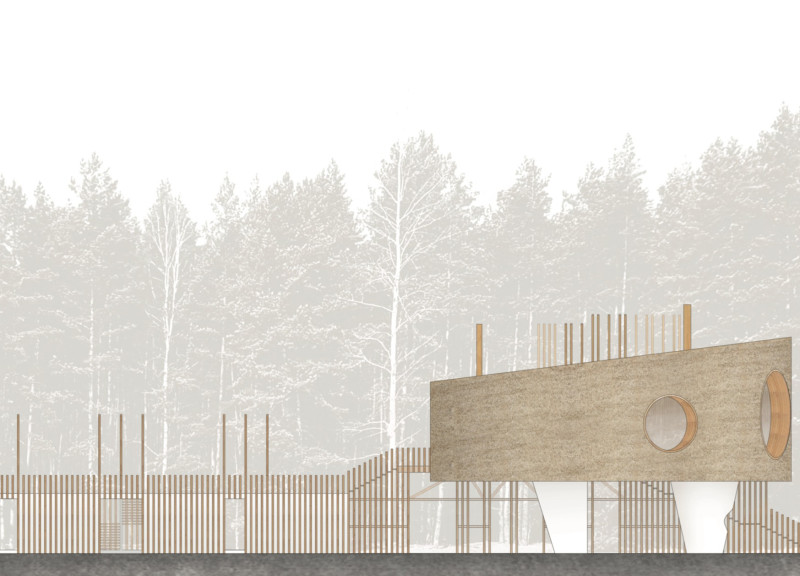5 key facts about this project
The Great Kemeri Hedgehog is located in Latvia within the Great Bog region. Designed as a multi-functional space, it serves as a visitor center that connects the surrounding natural environment with local folklore. By relying on the story of the hedgehog boy, the design creates a space that is both functional and rich with narrative. The building's organic shape helps it blend into the landscape while inviting visitors to engage with its unique character.
Form and Function
The structure has a form that resembles a gentle creature, which invites visitors to interact. It offers an exhibition space, a café, and an information center, all laid out to provide a smooth flow from one area to another. This particular organization allows visitors to easily navigate the space and encourages a deeper connection with the surrounding nature and the stories told within the building.
Materiality
Cross-laminated timber is used for the main structural elements of the building. This choice supports sustainability while ensuring strong construction. The roof is covered with straw thatching, a nod to traditional building techniques in the area. This combination of materials respects local practices and emphasizes the project’s commitment to environmental consciousness.
Spatial Dynamics
The ground floor plan shows how different functions are arranged to promote easy movement throughout the building. The ticket and information booth is designed to serve a dual purpose as a chimney that warms the exhibition area. “The Spikes” act as both light sources and architectural features, providing a playful interaction between the interior and exterior spaces.
Detailing
Attention to detail is present throughout the design, with various elements encouraging tactile engagement. Visitors can touch and explore different surfaces, enriching their experience. This hands-on interaction allows people to connect with both the structure and the surrounding landscape in a meaningful way. The design's focus on sensory engagement can be seen in features that welcome exploration and conversation, further solidifying its narrative role within the environment.



























